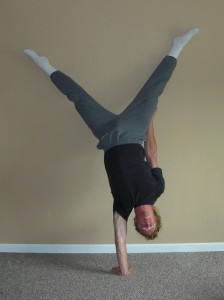This great question came in from Dan regarding twisting out of position in the one arm handstand. As this is something I myself have experienced I figured its a common problem among one hand handstand training.
Thank you for the handstand program that you sent to me recently. I was hoping you might be able to give me a little more information about the one handed handstand. I am able to hold myself up using one hand and one finger but once a take the hand away my body begins to twists. Do you have any suggestions on how to stop this twisting? I have been working on it for a while now and the twisting does not seem to dissipate. I know that all of the instructions provided say to turn the hand you are standing on to a 45 degree angle but the twisting seems to get worse when I do this. Any info you can pass along would be appreciated.
Jim Bathurst of Beast Skills has been training the one hand handstand a lot lately, and going through much the same things. I’ve taken some small snippets from recent articles that focus specifically on the turning out of position in the one hand handstand.
I was told that the balance should still be more focused on front and back. Do not twist or move sideways too much, as that’s for the more advanced handbalancers. I have always twisted slightly as I shifted over to my supporting hand. I also twist out of my one arm handstand often, so perhaps this is to blame?
***
While some can hold this arched one arm handstand…many more people will have problems and twist out of the one arm handstand (myself included). Not to mention that aesthetically speaking, it’s not as pleasant as a straighter body position.
***
This deficiency in shoulder mobility was a main cause of why I twisted out of my one arm handstands all the time. Getting yourself into a straight line is much more efficient in the one armer, and you don’t have to fight yourself.
***
When shifting onto the supporting arm, notice that I focus on dropping the outside leg. There is no counter-shift back to the left (which twists the body).
It seems to be believed that attaining a perfectly straight handstand goes a long way towards preventing this twisting. Of course, you must be able to maintain the optimal shoulder position. But back in the day many hand balancers did achieve the one arm handstand with a curved handstand too, so it is possible.
I highly suggest you read Jim’s articles for more details. Most people rush to attain a one arm handstand, and even more than balance, this skill will build your patience.
To stop twisting you must not do anything that makes your body need to twist out of the position. This is more easily said then done, but with training taking it real slow you can feel the difference.
Need more on this amazing move? Then check out How to do the One Hand Handstand.



 The first was to practice my hand balancing in one form or another every single day.
The first was to practice my hand balancing in one form or another every single day.

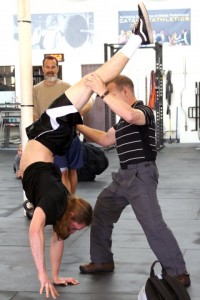
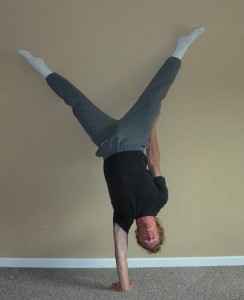 As was
As was 
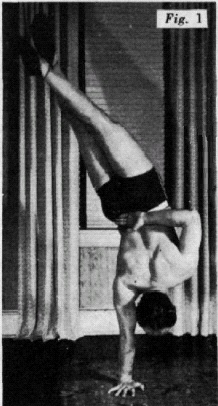
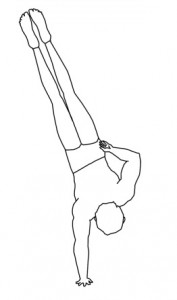 “This does not mean that you must be able to perform all of the hundreds of tricks in my basic course “Handbalancing Made Easy”. It simply means that you must be able to press into a perfect Two-Hand Handstand and hold it with absolute control. It means that your elbows must be straight and locked, that your shoulders must be stretched out and locked, that your back must be only slightly arched, your knees perfectly straight and your toes pointed.
“This does not mean that you must be able to perform all of the hundreds of tricks in my basic course “Handbalancing Made Easy”. It simply means that you must be able to press into a perfect Two-Hand Handstand and hold it with absolute control. It means that your elbows must be straight and locked, that your shoulders must be stretched out and locked, that your back must be only slightly arched, your knees perfectly straight and your toes pointed.